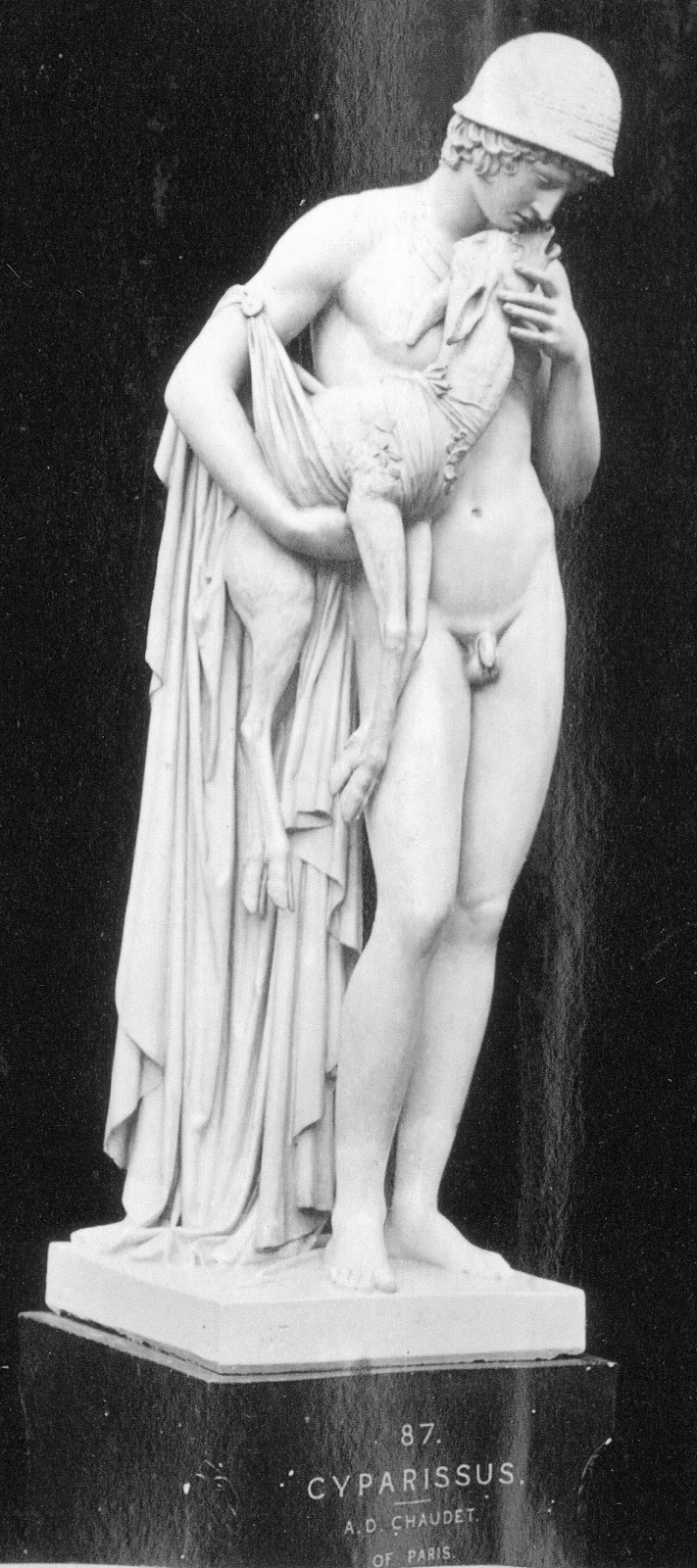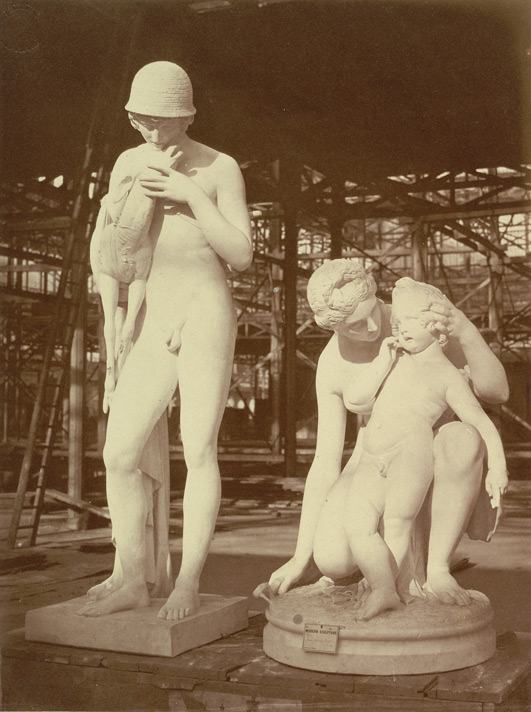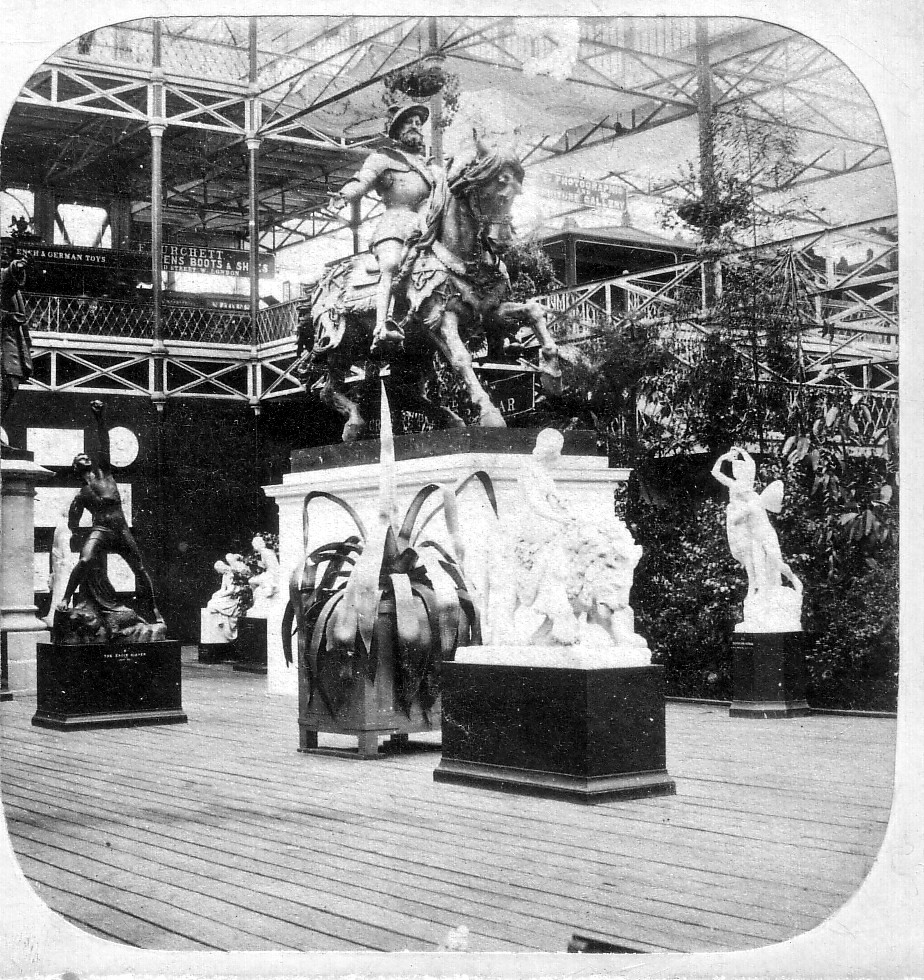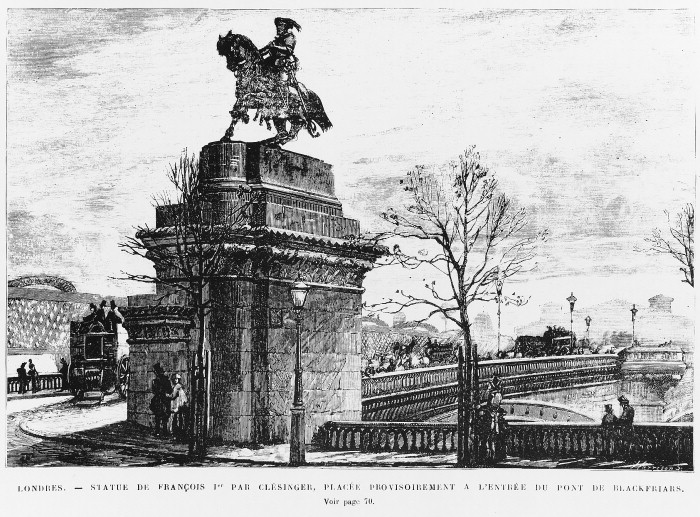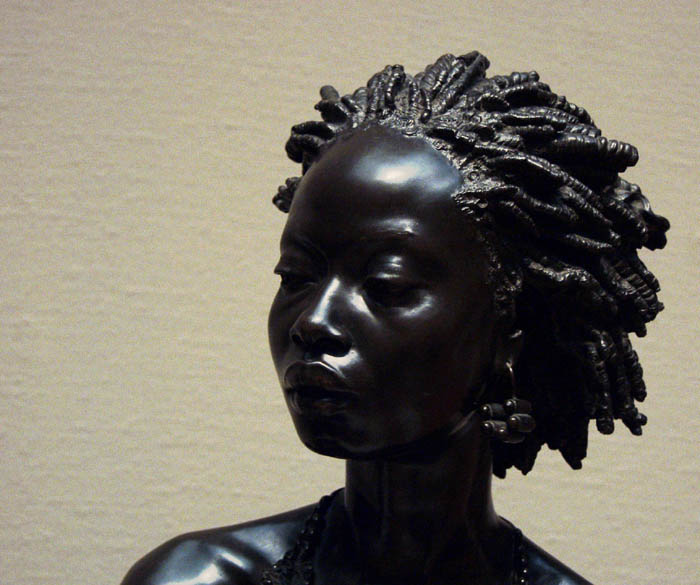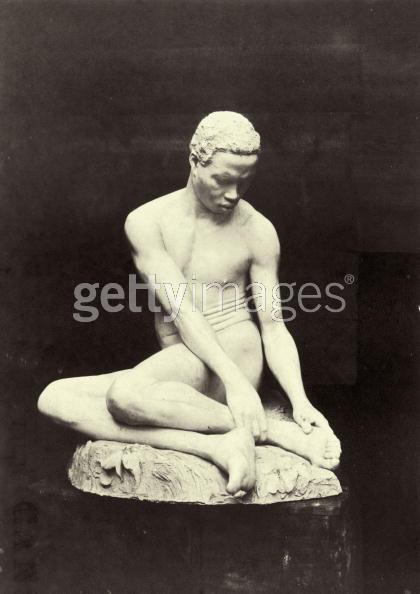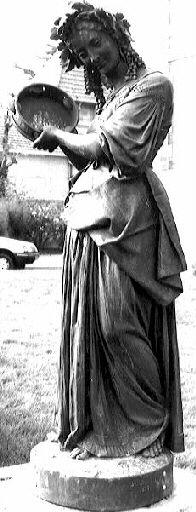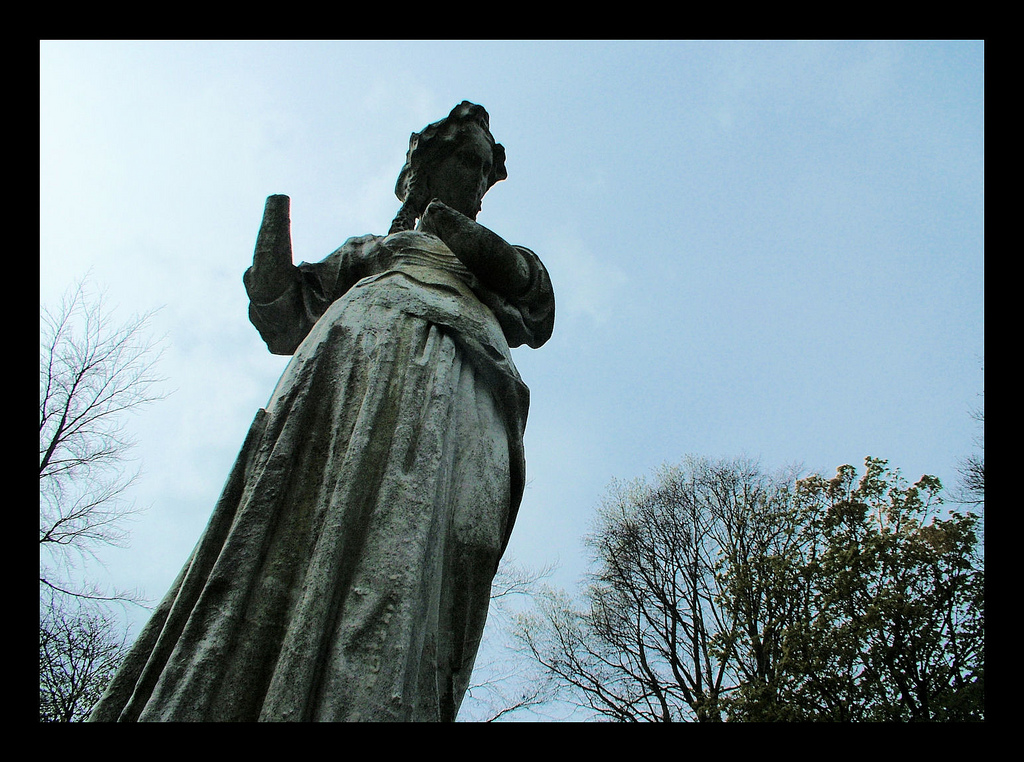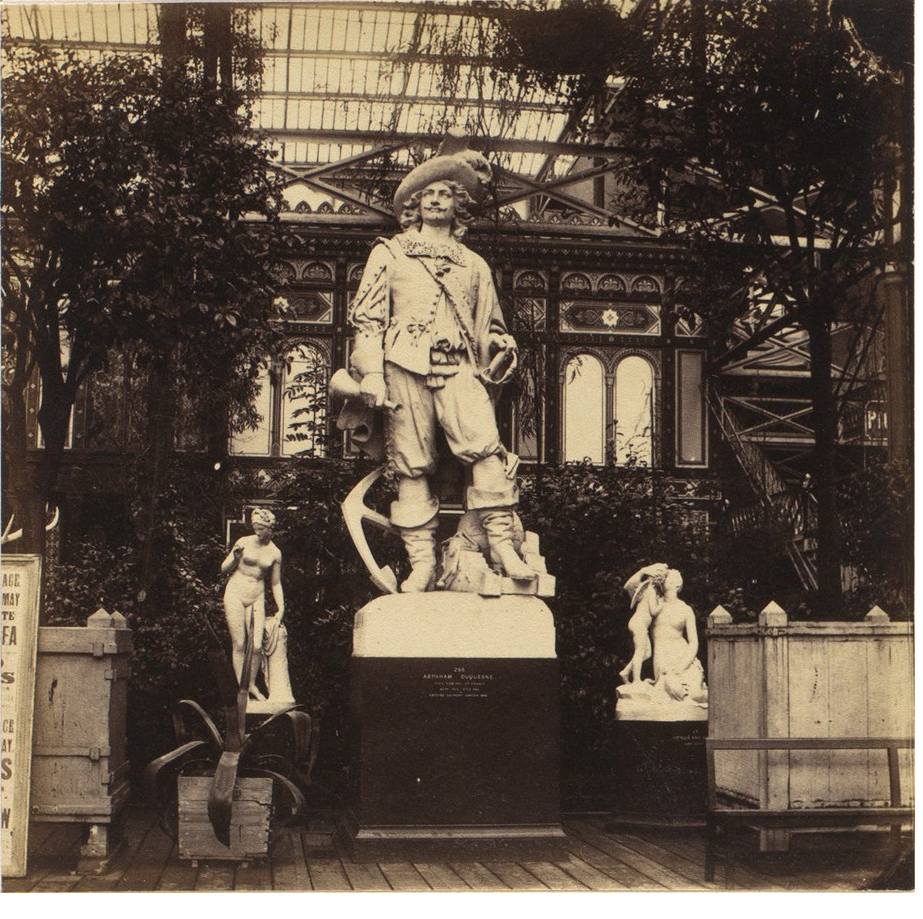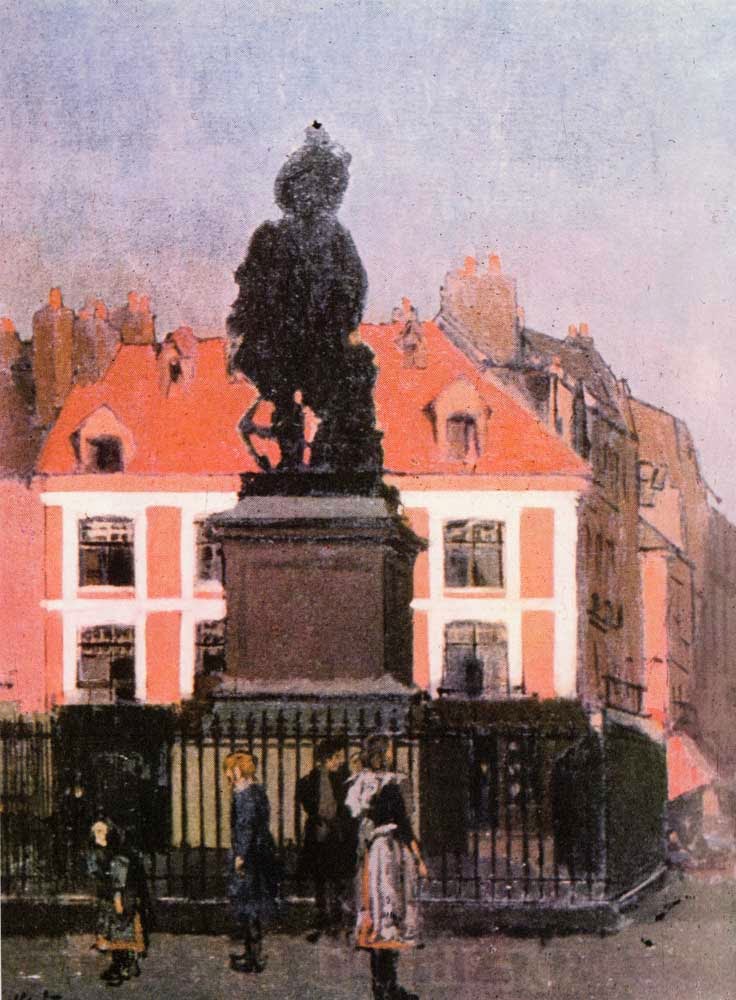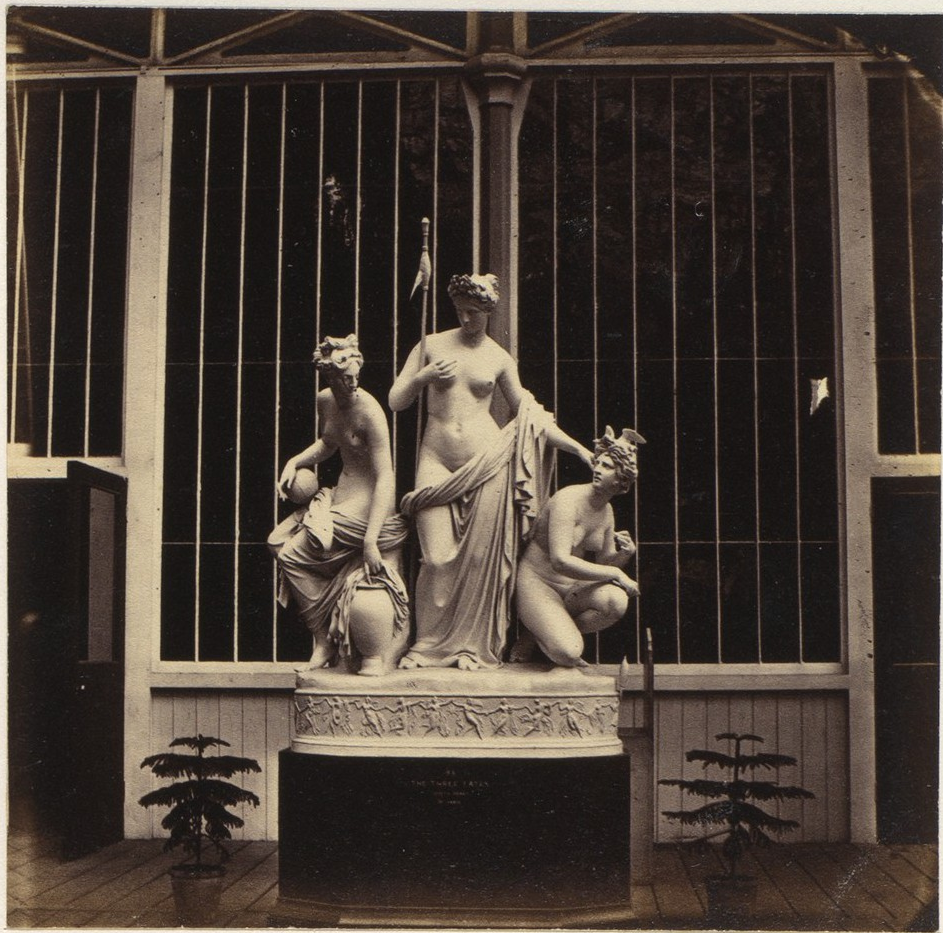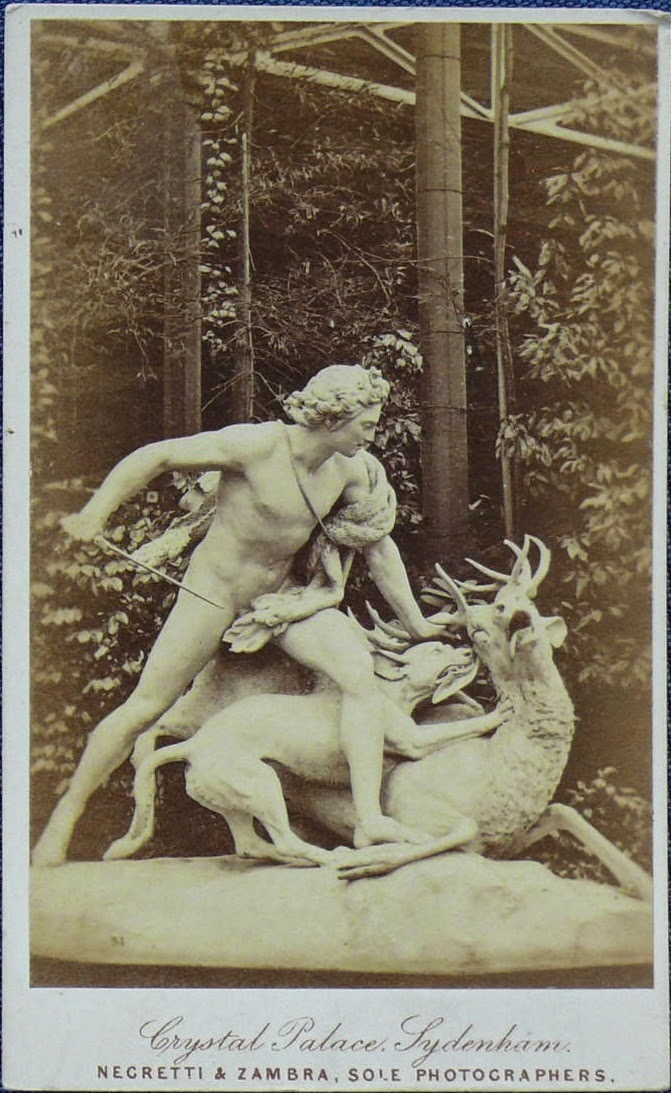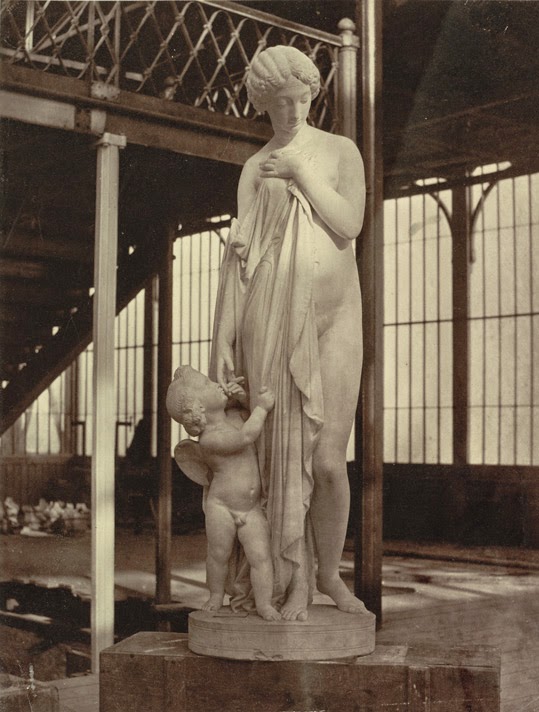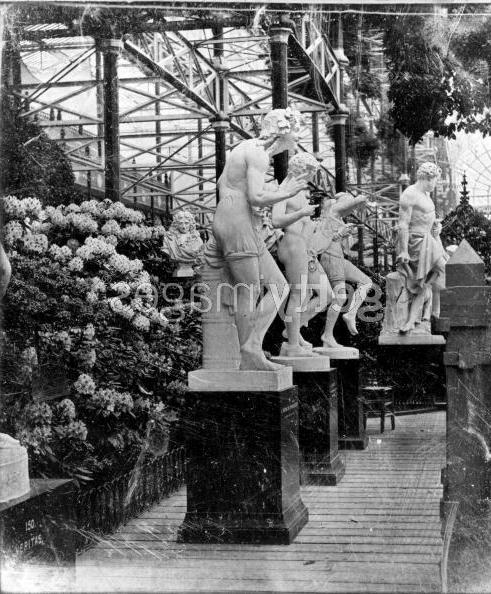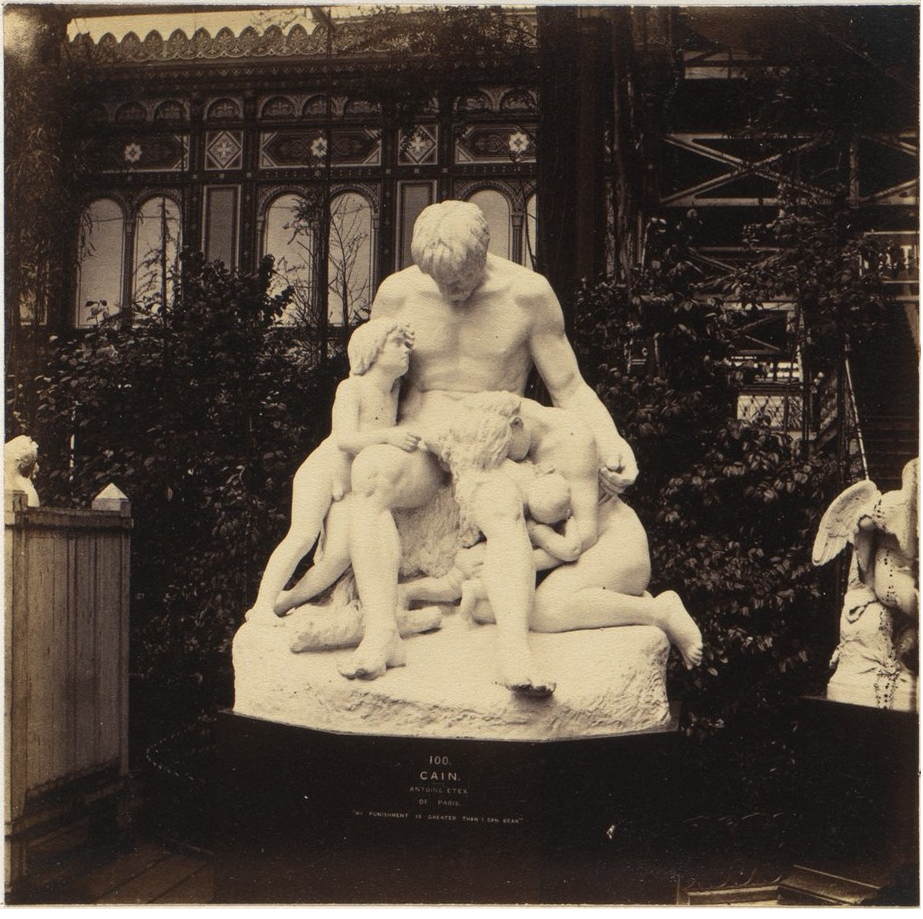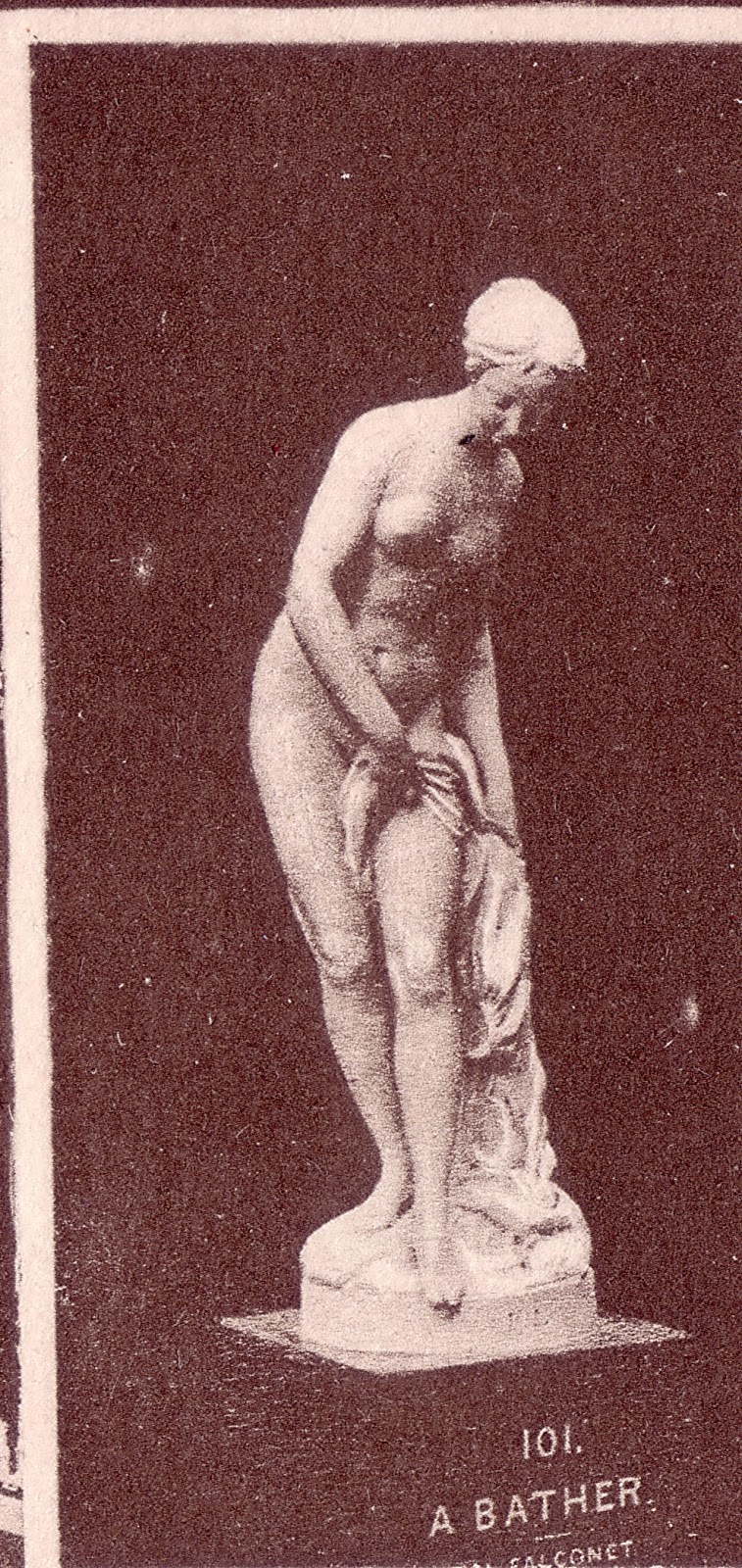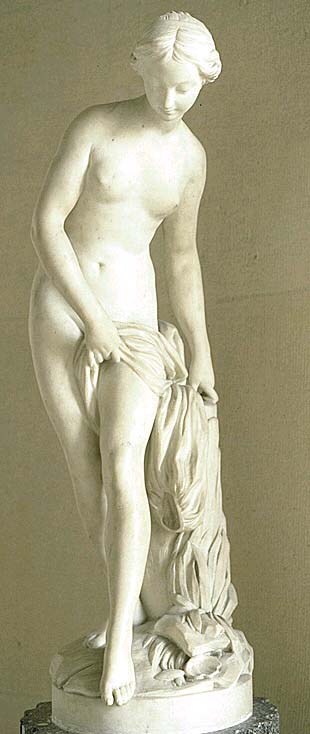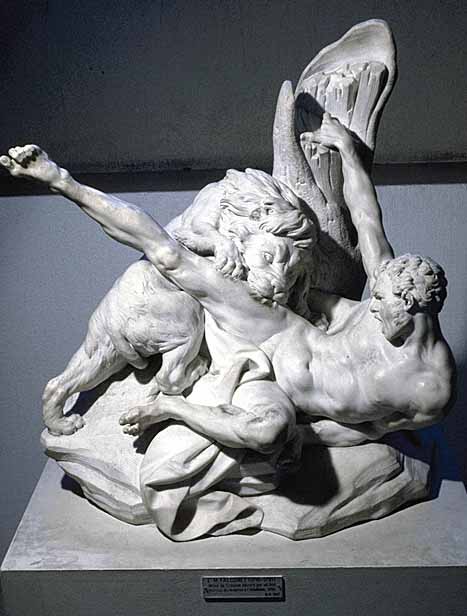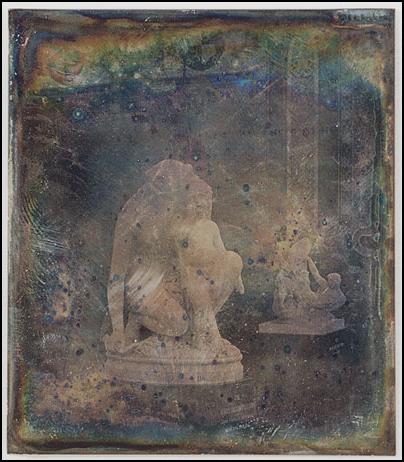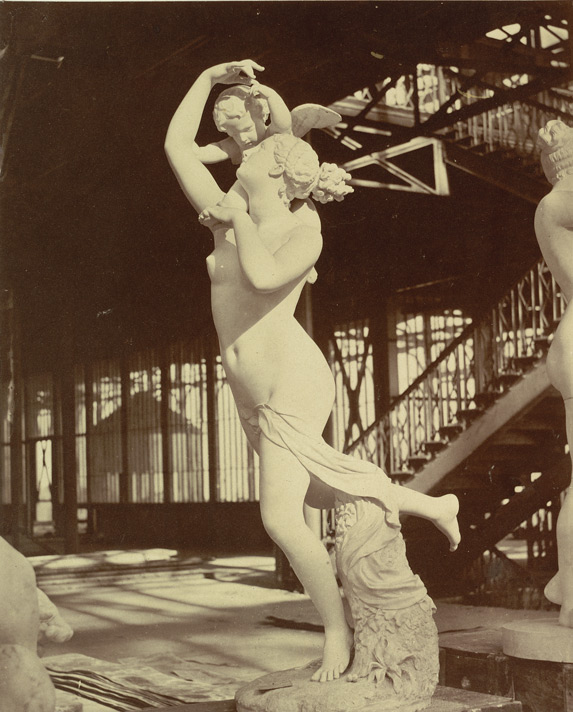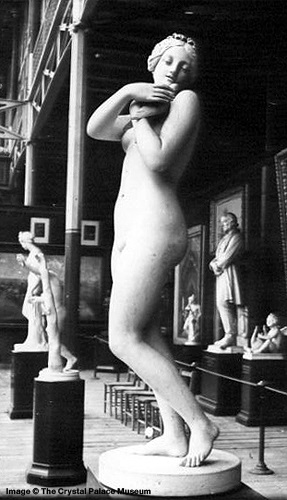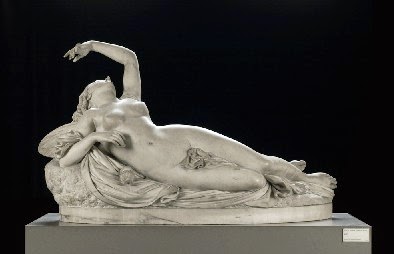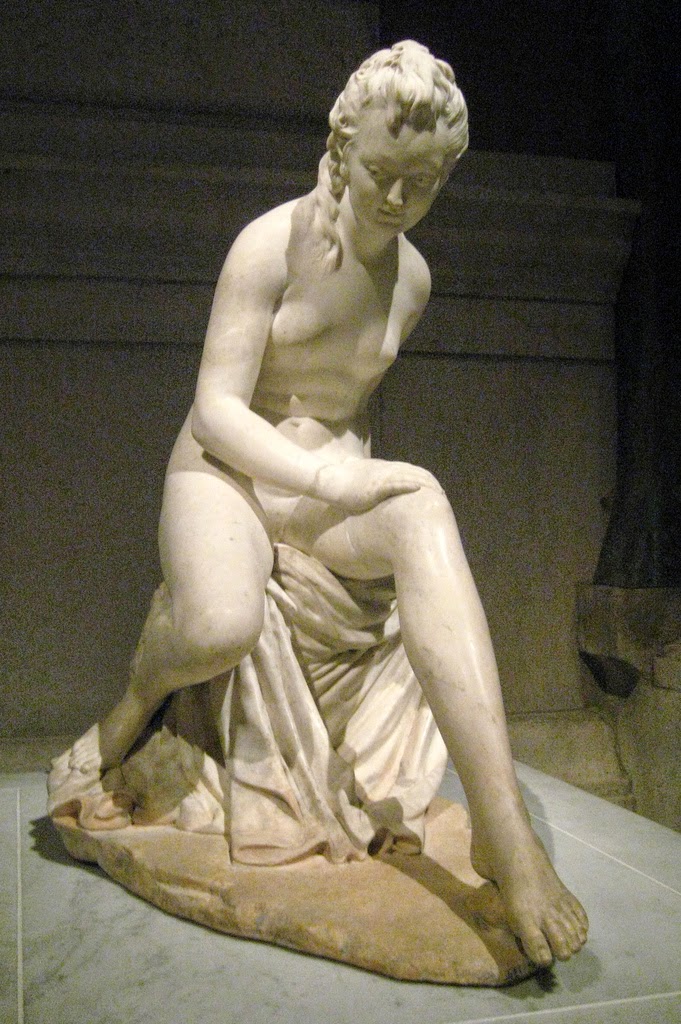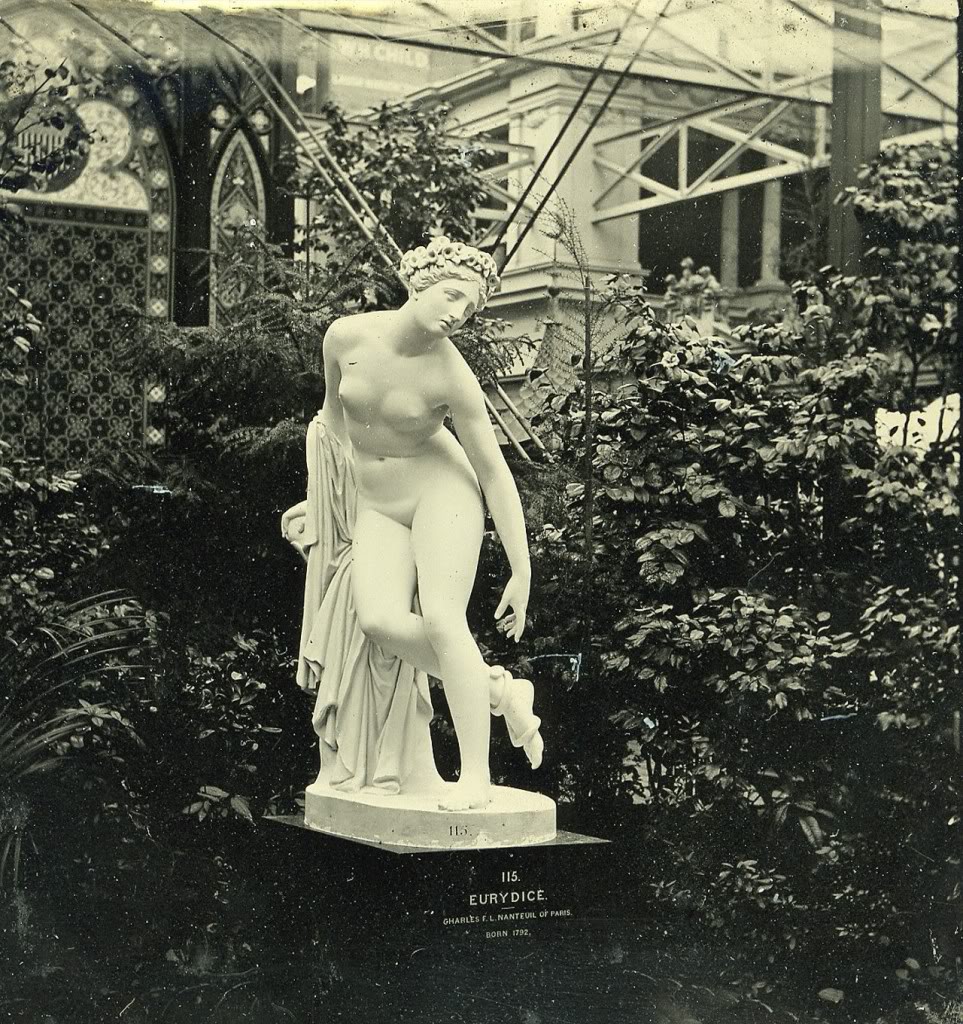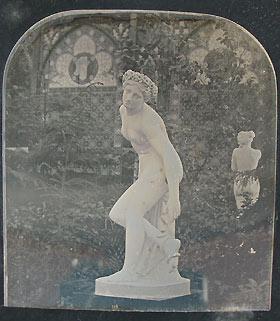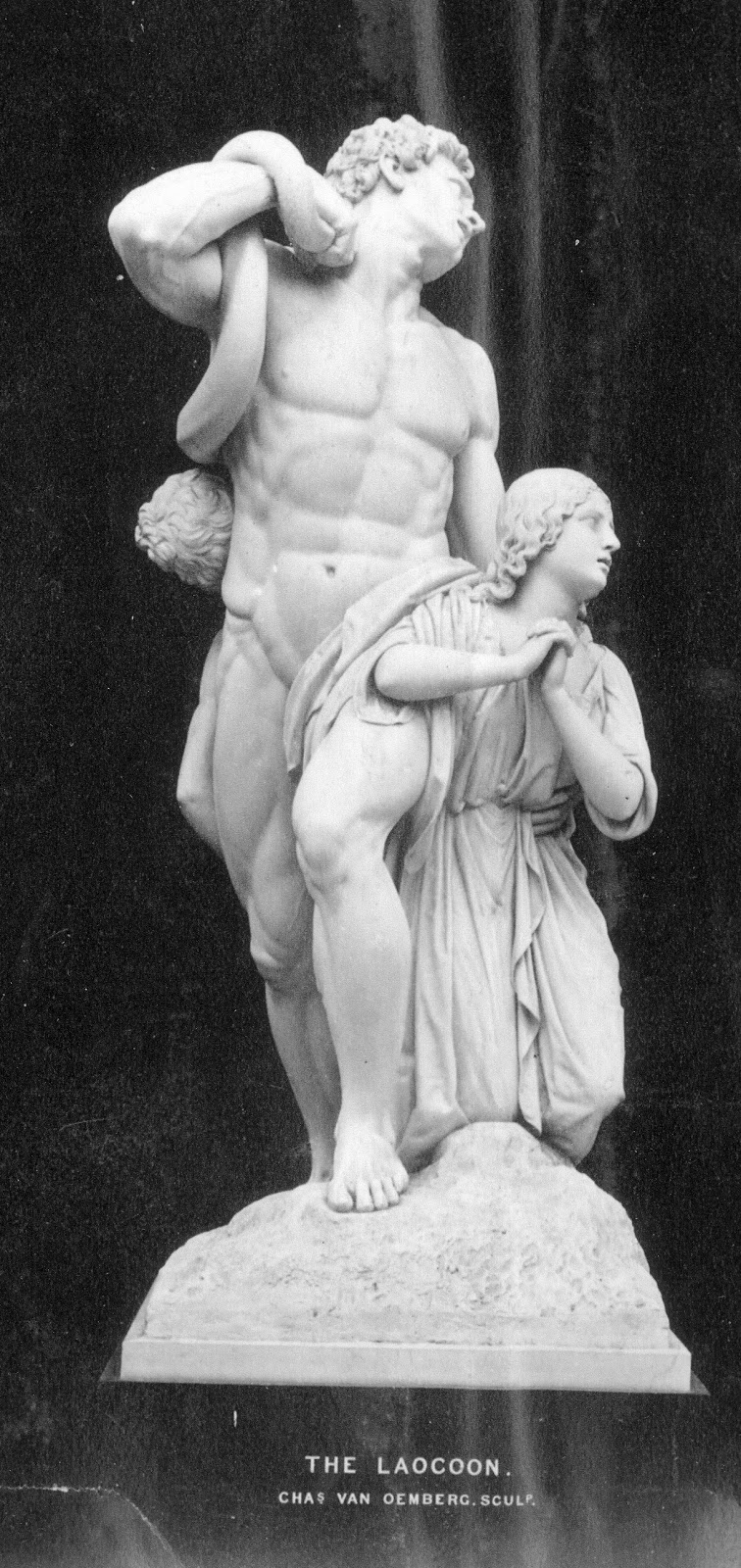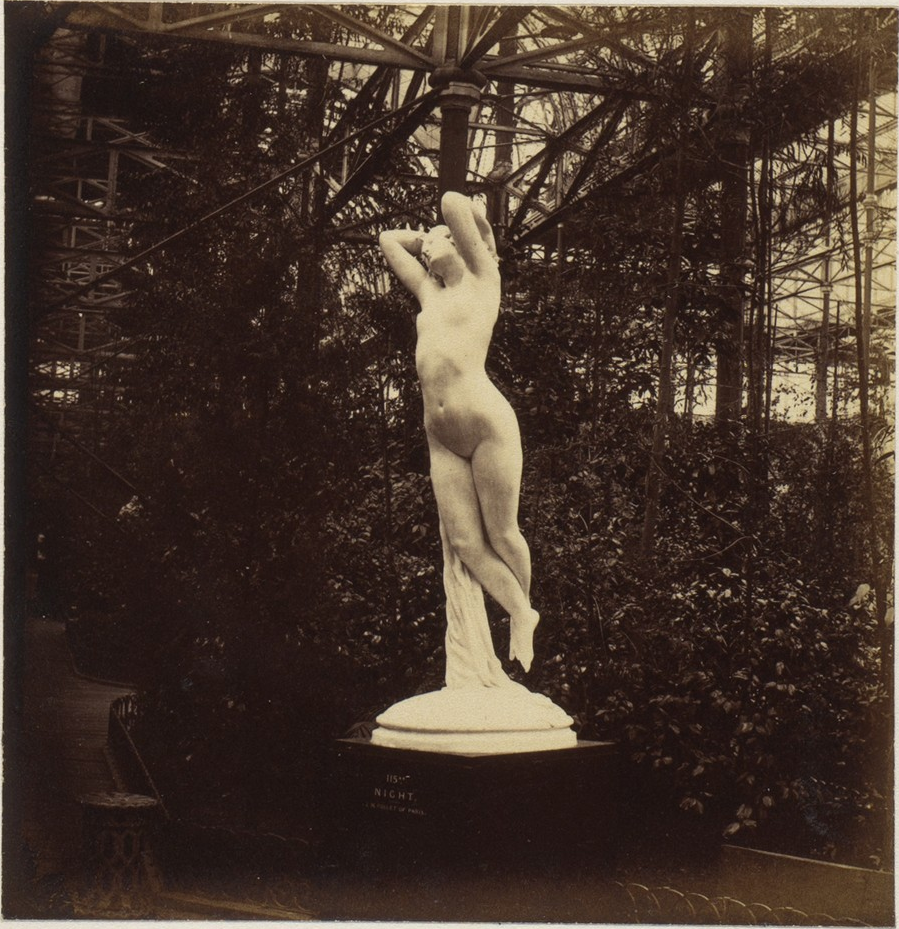WILLIAM GEEFS
1805 - 1883
Willem Geefs, born in 1806 ; the son of a baker. He is now the first of the Belgian sculptors. His brother, Joseph Geefs, also executed the colossal equestrian statue of Godfrey of Bouillon, which was exhibited in the Great Exhibition of 1851.
http://en.wikipedia.org/wiki/Guillaume_Geefs
107. PETER PAUL RUBENS.
Erected to the honour of the celebrated painter in the Place Vert at Antwerp, where Rubens resided for many years of his life. This statue represents him in the dress of his time ; his palette at his feet.
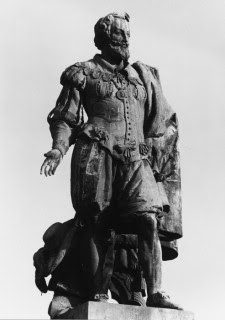
108. MALIBRAN.
Statue. Life size.
Marcia Garcia de Beriot, better known as Madame Malibran, the celebrated singer ; next to Pasta, the most gifted lyrical actress of modern times. After a brief, but brilliant carrer, she died suddenly, while singing at the musical festival at Manchester, in 1836, being in her twenty-eighth year.
It has been remarked that the pose of this statue is not characteristic of the vivacious, impassioned singer it represents ; but we must remember it is a monumental and idealised – not a portrait, statue.
The original marble is on her monument at Laeken, near Brussels.
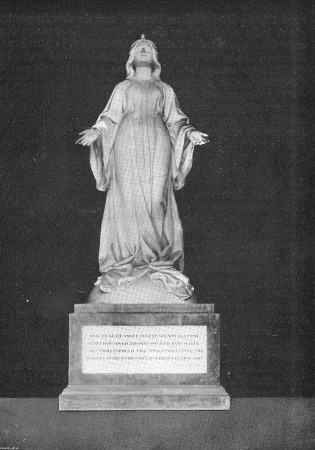
Considering this is described as a beautiful statue, can't believe this is the first illustration of it.
 http://www.laken-ingezoomd.be/searchact ... =15&page=2
http://www.laken-ingezoomd.be/searchact ... =15&page=2
Witmarmeren beeld van Malibran in de rol van Norma, gemaakt in 1842 door Guillaume Geefs (1805-1883) naar een portretbuste door de Bériot, in de grafkapel op het kerkhof van Laken.
109. THE LIFE OF ST. HUBERT IN A SERIES OF EIGHT BAS-RELIEFS.
St. Hubert, the patron saint of hunting, and a popular saint of the Low countries, is supposed to have been born about the year 663. He was a nobleman of distinction in the court of king Thierry, much addicted to worldly pleasures, more especially to the chase, in which he spent the greatest part of his time without taking any thought of his salvation. On a certain day, while hunting in the forest of Ardennes, he was miraculously converted, quitted the world, and after living for some years in religious retirement, he succeeded the martyr St. Lambert, as Bishop of Maestricht ; he afterwards became first Bishop of Liege. During his lifetime he was distinguished by his virtues and his charities, and extended the blessings of Christian civilisation through the wild half-heathen country round him : he is supposed to have died in the year 727.
The church of St. Hubert in Ardennes had fallen into decay, and the shrine of the famous old Saint disappeared, when the present King of Belgium, himself a protestant, presented to his Roman Catholic subjects a beautiful tomb commemerating the patron Saint of the locality. The execution of the work was confided to willem Geefs, and the design and execution are both eminently beautiful. It consists of a sarcophagus raised on a plinth ; on the summit is the half recumbent figure of the Saint in white marble, wearing his Episcopal mitre and robes. Around the sarcophagus are placed eight subjects in bas-relief, three on each side, and one at each end. We shall take them in the following order.
A. The birth of St. Hubert, and his appearance as a benefactor on earth. Angels present him, as an infant, to religion ; the poor rejoice. Eight figures.
B. St. Hubert hunting in the forest of Ardennes is converted by the miraculous appearance of a stag bearing a luminous cross between his antlers. An angel points the vision. The horse and two dogs complete the group.
c. St Hubert retires as a penitent into the depths of the forest : he is seen kneeling before a cross accompanied by angels : one of whom sings hymns of praise. Three figures.
D. St Hubert is ordained Bishop of Maestricht by Pope Sergius I. Ten figures.
E. St. Hubert appears enthroned as Bishop and the father of the poor. He is healing the sick, clothing the hnaked, and feeding the hungry. Eleven figures.
F. St. Hubert, attended by his clergy, removes the body of St. Lambert from Maestricht to Liege. Devout prople kbneel as they pass by. Eleven figures.
G. The death of St. Hubert : he expires amongst his clergy and his people, who are weeping at his feet, while an angel tenderly kisses his hand. Ten figures.
H. The Saint is laid in his tomb in the Cathedral at Liege. The Bishop behind is his son Floribert, who succeeded him. In the year 825, his remains were transported to the church where this beautiful monument has recently been placed. Eight figures.
These compositions are designed with much poetic feeling, and executed with great skill and delicacy, ijn the picturesque style of the early Renaissance, (the same style that we admire in the gates by Lorenzo Ghiberti in the Renaissance Court.) the figures are in different degrees of relief, those in the background being almost flat, whilst those in front are in alto reievo. A more classical style of art would have ill suited either the purpose or the locality.

